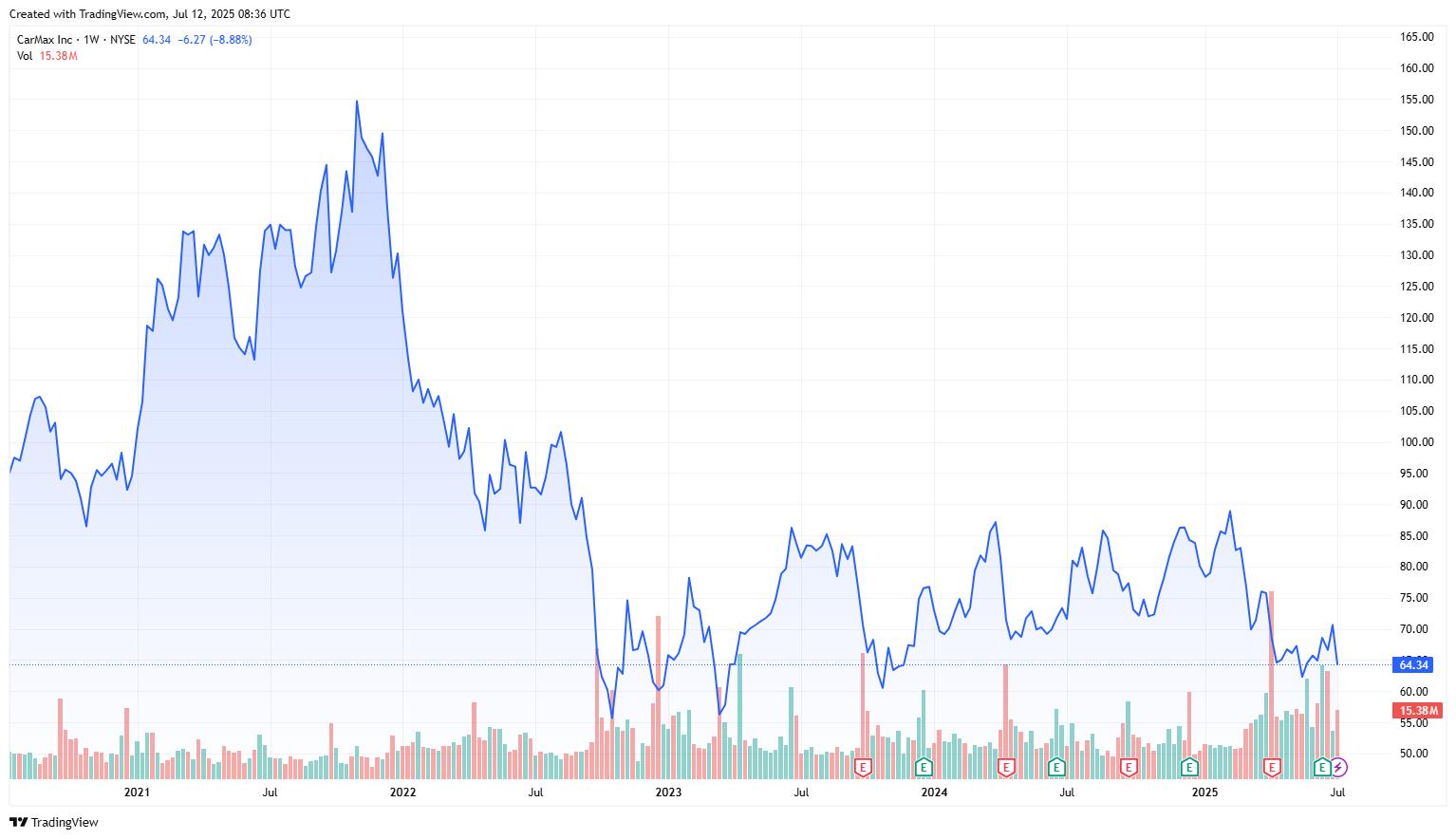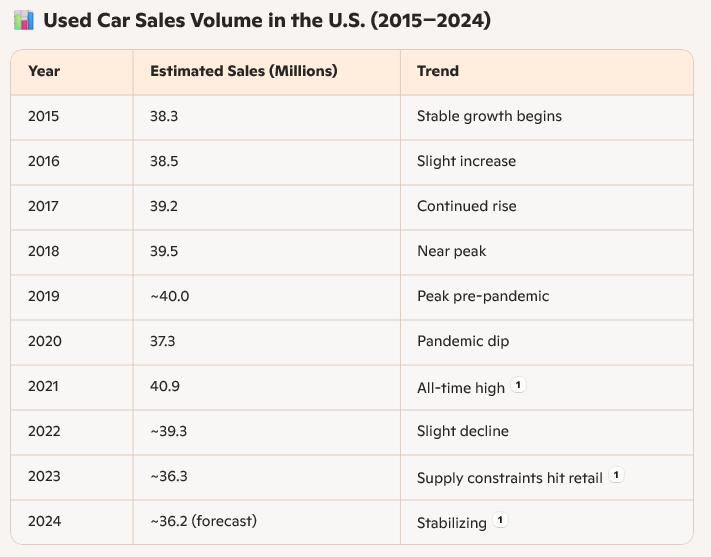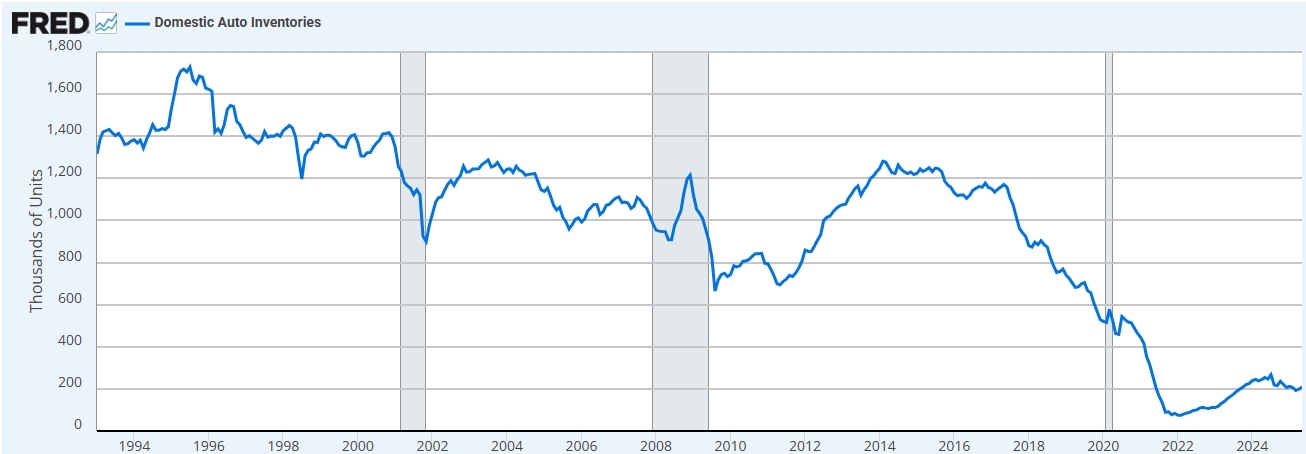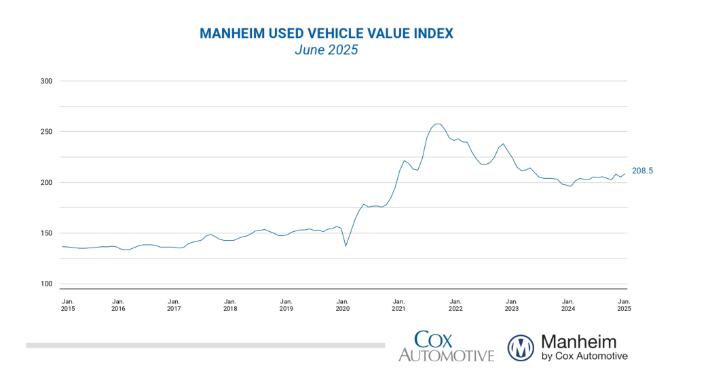CarMax (KMX) – The Future of the Used Car Business
Share Price (USD) | 65.20 | 2025 Revenue (USD) | 26.53bn |
Market Cap (USD) | 9.78bn | 2024 EPS (USD) | 3.21 |
Listings | NYSE | Dividend Yield | NA |
52-wk high/low (USD) | 61.34-91.25 | Target Price (USD) | 60.00 |

Source: TradingView
Investment Thesis
TradingKey - We see more downsides than upsides for CarMax and the used-car retailers. Firstly, the competition is too intense, the market is very fragmented and there is no proper differentiation. Also, the strength of the used-car industry in terms of ASP is mostly due to the weakness of the new-car market, but once the supply issues for new cars are sorted out, the price of the used cars will drop, and this will pull down CarMax revenue and profitability.
Company Description
CarMax is the nation's largest used-car retailer that buys, reconditions, and sells cars through about 250 stores across. It offers customers a broad selection of used vehicles, including domestic, imported, and luxury vehicles, as well as hybrid and electric vehicles at competitive prices. In the last fiscal year, the company sold around 770,000 used vehicles (to end-customers) and 550,000 wholesale vehicles (auction to other dealers).
How Does CarMax Make Money?
KMX reports revenue across 3-line items: used, wholesale, and other. Used vehicle sales represents the large majority of the revenue – 80%, while wholesale represents roughly 15%, the rest 5% is from insurance, advertising and others.
Overall, revenue depends on two factors – 1) number of cars sold and 2) the average ASP. The number of cars sold is a more important indicator, as KMX do not have much control over the ASP.
As you might have already realized, this is not a high margin business, as after deducting the costs of acquiring the inventory, and all the operating expenses, the margin goes well below 10%. But here comes the financing segment, which is the net interest income from the auto finance business. The net interest income represents around half of the pretax profit for the whole company.
The financing business offers financing solely to CarMax customers and finances more than 40% of the company's retail vehicle unit sales, with approximately $17.59 billion portfolio of managed receivables.
The vehicles that do not meet CarMax's retail standards are sold to licensed dealers through its wholesale auctions.
Its omni-channel experience provides access across all of CarMax inventory, leveraging its scale. Customers can buy a vehicle on their terms, whether online, in-store, or through a combination of both.
CarMax operates entirely in the US in terms of both revenue and sourcing, and when it comes to sourcing its 70% of individuals who are selling their cars and 30% from other dealers.
Industry and Competition
CarMax only holds a relatively small market share in terms of volume (4%) and in terms of revenue too (11%), despite being the number one player. Other major competitors are Carvana, AutoNation and Vroom. In fact, there is not much difference in the inventory they sell but there are differences in the sales channels they utilize. KMX uses a hybrid approach where they combine both online tools and offline presence. Carvana, for instance, is entirely online and sells their inventory in special vending machines.
Growth Drivers
To get a better understanding of KMX topline growth, we have to see it from the perspective of sales volume and ASP.
In terms of sales volume for the whole industry, the number is quite flat with roughly 38-40 million cars per year in the last 10 years. This constitutes both retail transactions (KMX, CVNA and other dealers) and private transactions (hand-to-hand without intermediary), and currently the ratio between these two markets is 50-50.

Source: Bureau of Transportation Statistics
However, the retail transactions are growing at the expense of the private ones. Retail sales are projected to grow 2-3% in the coming years. Considering the space is quite crowded, we don’t expect KMX to out-sell their competitors when it comes to volume, as there is not much differentiation between peers.
The other dynamic is the sales price. Right now, the price is still elevated compared to the pre-COVID times, mostly due to the continuing supply chain issues that originated from the post-COVID opening during 2021-2022. We believe this level of price for used cars is not very sustainable. Once the supply chain issues are resolved, the supply of new cars will improve – this will drive the new car prices down and consumers will buy more new cars, snubbing the used ones driving their price lower. The lower price of used cars will also negatively impact the gross margin.

Source: U.S. Bureau of Economic Analysis
Additionally, less sales volume will negatively impact the car loan business, potentially hitting the interest income.

Source: Cox Automotive Inc.
Valuation
According to our DCF model, the current fair value of KMX is 25 USD (I know it’s quite low, right). That’s mostly driven by the negative outlook for the used car prices market and the intense competition among peers which will make it difficult to gain market share.
Risks to the thesis
The current high tariff environment can be an opportunity for CarMax. On one hand higher tariffs will increase the reconditioning costs as car parts needed for car renovation may become more expensive. However, tariffs are way more harmful for new cars as this can prolong the production and the supply of new cars, giving extra time for the used car businesses to operate at elevated prices.

Get Started



